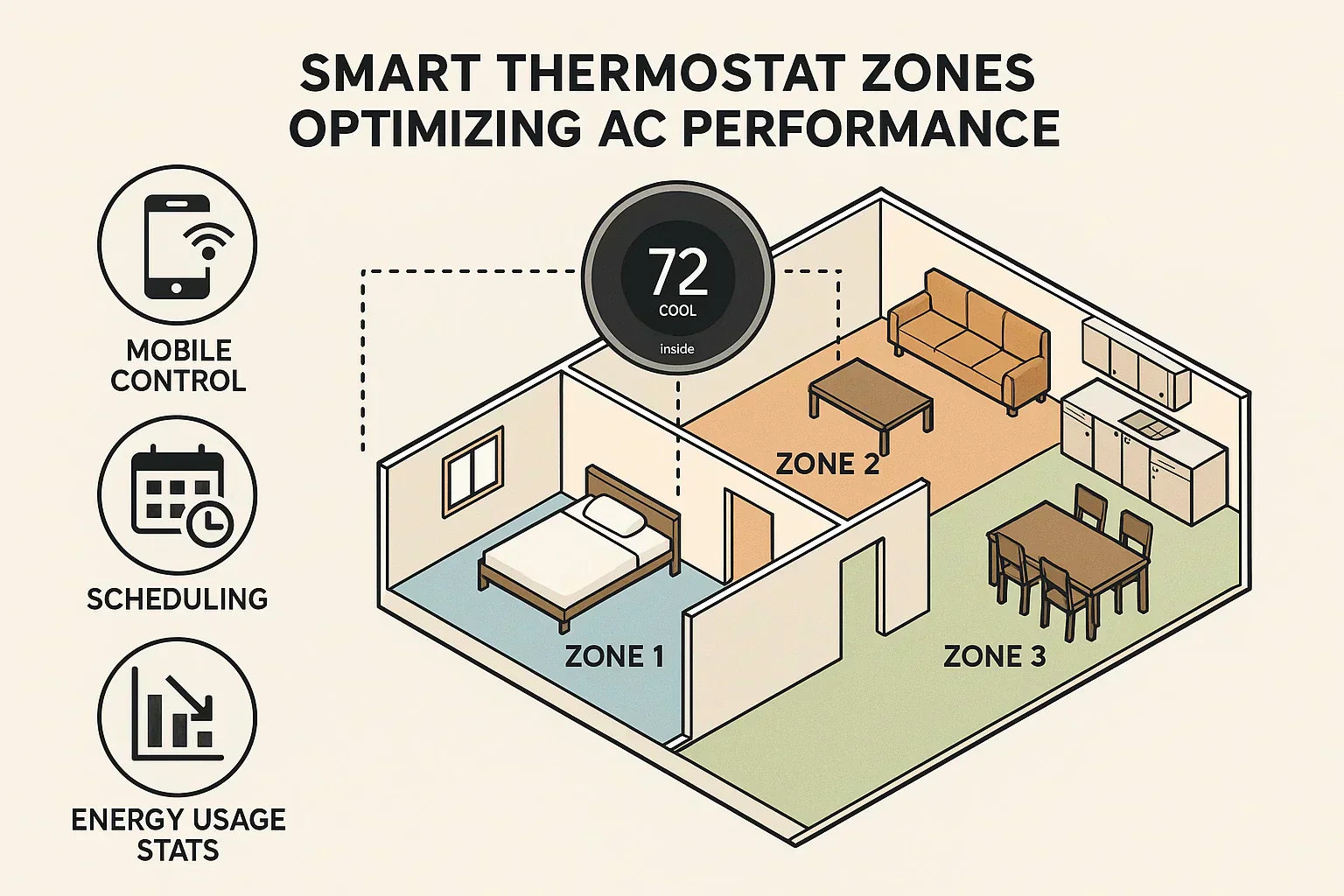When it comes to staying cool in 2025, energy efficiency isn’t just a luxury—it’s a necessity. With electricity costs climbing and updated SEER2 standards in place, choosing the right central AC features can mean the difference between a bloated utility bill and season-long savings.
The good news? Central AC systems are smarter and more efficient than ever—if you know what to look for.
In this guide, I’ll break down the top energy-saving features worth investing in so you get more comfort, longer equipment life, and lower energy costs with every degree of cooling.
Start with the SEER2 Rating
The foundation of AC efficiency starts with its SEER2 rating—the updated version of SEER, designed to reflect real-world performance under realistic static pressure conditions.
As of 2025, the minimum SEER2 requirement is 14.3 in the southern U.S. and 13.4 in the northern states. But if you want real efficiency, aim for 16 SEER2 or higher.
Models rated 18+ SEER2 often include additional features like variable-speed compressors, ECM motors, and enhanced coil design—features we’ll dive into below.
To ensure you’re getting a certified high-efficiency model, look for the ENERGY STAR® seal, which now aligns with these updated standards. You can find a list of qualified models directly from ENERGY STAR.
🔗 Related: Top 10 Central AC Units Compared
Look for Variable-Speed Compressor Technology
Compressor type is a major efficiency driver in modern systems. In 2025, the top-performing ACs use variable-speed compressors that adjust their cooling output incrementally—matching exactly what your home needs.
That means:
-
Less cycling (which saves energy)
-
More consistent temperatures
-
Better humidity control
-
Lower noise levels
While more expensive upfront, these systems are designed to pay off in 2–5 years depending on usage. According to the ACEEE, variable-speed technology is one of the most effective ways to reduce household energy consumption.
Smart Thermostat Compatibility
An efficient system is only as smart as the controls behind it. That’s why most high-efficiency central AC units in 2025 are smart thermostat–ready—and that’s a big deal.
Pairing your system with an ENERGY STAR–certified smart thermostat gives you:
-
Adaptive scheduling
-
Real-time usage monitoring
-
Remote control and automation
-
Energy-saving modes and peak-load reduction features
Even if your unit is high-SEER2, it needs a brain to run efficiently. And that’s where smart thermostats can save homeowners 10–20% annually, depending on usage patterns.
Advanced Coil Design and Materials
Energy efficiency also depends on how well your system transfers heat—and that happens through the AC coils.
In newer systems, you’ll often see:
-
Microchannel coils (more surface area, faster cooling)
-
Copper or aluminum designs for superior conductivity
-
Protective coatings to combat corrosion and airflow blockage
Manufacturers like Carrier and others are increasingly shifting toward coil designs that use less refrigerant while improving performance—a win for both energy savings and the environment.
ECM (Electronically Commutated Motor) Fans
The blower motor is another unsung hero in your AC’s energy use. Older models use PSC (permanent split capacitor) motors that run at full speed no matter what.
Modern efficient systems use ECM motors, which:
-
Ramp up or down based on airflow needs
-
Use up to 75% less energy than PSC motors
-
Run quieter and last longer
-
Improve airflow and humidity management
Want to understand why ECM motors are such a big leap forward? This technical breakdown of electronically commutated motors (ECMs) from EE Power offers a solid overview of how they work and why they’re so efficient.
Other Bonus Features That Help Efficiency
If you’re comparing models, keep an eye out for these supporting features that can push performance even further:
Zoned Cooling
Divides your home into sections with individual controls—so you’re not wasting energy cooling unused spaces.
Demand-Response Ready
Some utility companies offer incentives if you install a system that can reduce load during peak hours.
Thermal Expansion Valves (TXVs)
These help regulate refrigerant flow for optimal performance in varying temperatures.
High-MERV Filters with Low Static Pressure
Improved filtration is great—but only when it doesn’t choke your airflow. Choose systems designed for air quality add-ons without sacrificing efficiency.
What to Avoid: Efficiency Gimmicks
Here’s a hard truth: not every “green” label means real savings.
Be cautious of:
-
Oversized units — They short cycle and waste energy
-
Non-certified "eco" modes — May do little more than dim an LED
-
High-SEER2 claims without variable speed or ECM tech
If it’s not certified by ENERGY STAR or backed by a known brand, do a little more digging. A high price tag doesn’t guarantee high performance.
Final Thoughts from Alex
I’ve been around enough installs to know that efficiency doesn’t come from a sticker on the box—it comes from smart design, smart components, and smart installation.
In 2025, the central ACs worth your money are the ones that combine:
-
A solid SEER2 rating
-
Proven technology like variable-speed compressors and ECM motors
-
Compatibility with smart controls
-
And features tailored to your home’s size and needs
Buy smart. Install smarter. And always keep in mind that comfort and savings go hand in hand when efficiency leads the way.
🔗 Read next: Common Central AC Installation Mistakes and How to Avoid Them
Alex Lane
Your Home Comfort Advocate







